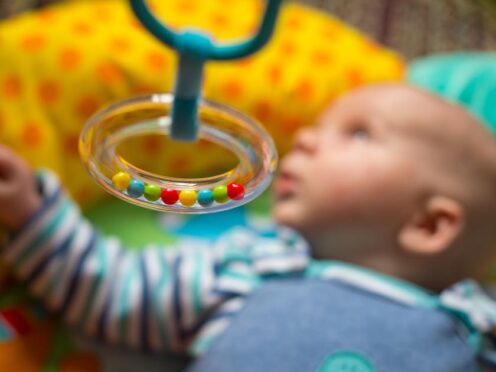
Children living near Sure Start centres in their first five years of life performed better in their GCSEs than others, according to a new report whose author warns the current Government’s family hubs are unlikely to have the same impact.
The research by the Institute for Fiscal Studies (IFS) concluded that access to a Sure Start centre – set up to provide support to families with children under the age of five in England – “significantly improved the educational achievement of children, with benefits lasting at least until GCSEs”.
Impacts were “much larger” for children from the poorest backgrounds and those from non-white backgrounds, the IFS report said.
Children living near a centre in their early years and eligible for free school meals had better performance at GCSE by three grades – equivalent to the difference between getting two Cs and three Ds and getting five Cs, researchers said.
While previous analysis of the effects of Sure Start has been done, this is said to be the first evidence of how the programme affected children’s educational outcomes up to the age of 16.
The report stated: “Children who lived within a short distance (2.5 kilometres) of a Sure Start centre for their first five years performed 0.8 grades better in their GCSEs.”
The IFS added: “By the time they took their GCSEs, effects were six times higher for those eligible for free school meals than for those not eligible for them.”
The research, which was funded by the Nuffield Foundation, used data from the Department for Education and the National Pupil Database looking at the academic outcomes of six million children.
The IFS described Sure Start, which was introduced in 1999 as “the first large government initiative to provide holistic support to families with children under the age of five in England”.
The shift from a Labour to a Conservative-Liberal Democrat coalition government in 2010 “brought a change of focus in early years policy – moving away from Sure Start and towards increasingly expanding funding for subsidised childcare to support parental employment”, the report said.
The IFS said funding for Sure Start fell by more than two thirds and over 1,340 centres closed between 2010 and 2022.
The report said it is “critical” family hubs and the Start for Life offer introduced by the current Government “draw on lessons from Sure Start”.
The Department for Education has previously described the hubs – at centres in 75 local authorities in England – as a “one-stop shop”, with trained staff on hand to give advice and programmes available for improving children’s development at home.
But the report said, in contrast to Sure Start, the hubs have a wider remit rather than a focus on 0-5 year-olds, a less clearly defined set of services and “much less funding: just over £100 million per year, compared with £300 million per year in the first year of Sure Start”.
Sarah Cattan, research fellow at the IFS and co-author of this report, said: “The current family hubs initiative aims to join up family support services for children aged 0–18 with less than 5% of what Sure Start received at its peak.
“It seems unlikely family hubs will be able to go as far in realising the potential that this research shows early years integrated programmes can have for children and their families.”
The report also concluded that access to a nearby Sure Start centre at early ages increased the likelihood of children being recorded as having a special educational need or disability (Send) at age five, “but significantly decreased” the proportion of children recorded as having a Send by the ages of 11 and 16.
The probability of having an Education, Health and Care Plan (EHCP) by the age of 16 decreased by 9%, which the IFS said was equivalent to more than 1,000 children a year.
The report said it is likely Sure Start increased reporting of need for some children while reducing the actual need for support for others.
Ruth Maisey, from the Nuffield Foundation, said: “Policymakers will want to take stock of this research as they look to improve special educational needs provision.”
Ex-children’s commissioner Anne Longfield, who now chairs the Commission on Young Lives, said: “Running down the number of Sure Start centres and cutting early intervention spending after 2010 was a historic mistake.
“Many children and families have been paying the price for these decisions ever since. The Government’s family hubs network does not begin to match the scale or ambition of Sure Start.”
A spokesperson for the Department for Education said: “As this report sets out, spend on Sure Start at its peak would represent just a quarter of current overall spending on early years.
“Current spend includes the largest investment in childcare, which will be transformative for children and families.
“We continue to invest in Family Hubs, which now cover half of all upper-tier local authorities and provide a number of advantages over the Sure Start model, including access to support up to when children turn 19 or 25 if they have special educational needs or disabilities, a wider range of support and an evidence-led focus on the crucial 1001 days of a child’s life.”

Enjoy the convenience of having The Sunday Post delivered as a digital ePaper straight to your smartphone, tablet or computer.
Subscribe for only £5.49 a month and enjoy all the benefits of the printed paper as a digital replica.
Subscribe